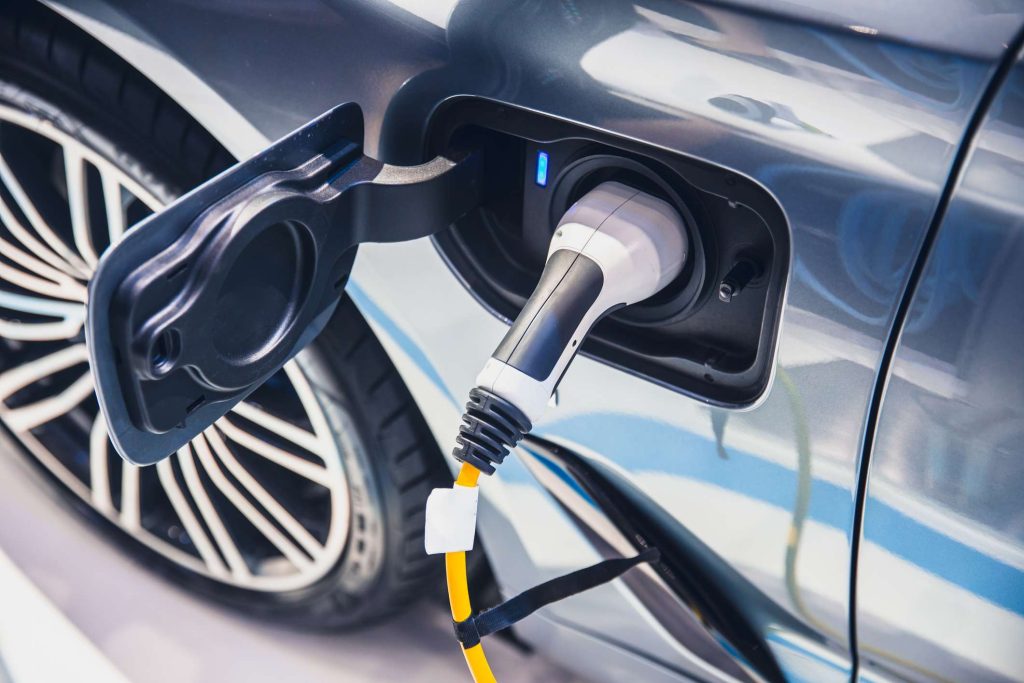Introduction
The global shift toward electric vehicles (EVs) has gained significant momentum as governments and industries move to reduce carbon emissions and dependency on fossil fuels. However, two major challenges continue to hinder the widespread adoption of electric vehicles: slow charging times and limited driving range. Battery technology, being the heart of an EV, plays a crucial role in determining how quickly an electric vehicle can be charged and how far it can travel on a single charge. As the electric vehicle market grows, it becomes increasingly important to understand whether advancements in battery technology can effectively address these challenges.
This article will explore the current limitations of battery technology, examine innovations that have been proposed to overcome these issues, and analyze whether these advancements can truly solve the problems of slow charging and short range in electric vehicles.
1. Understanding the Problem: Slow Charging and Limited Range
Before delving into solutions, it is essential to understand the two primary concerns faced by electric vehicle owners today.
1.1 Slow Charging Times
The charging speed of electric vehicles depends largely on the type of charger, the capacity of the battery, and the vehicle’s charging system. Current charging technologies, such as Level 1 (120V) and Level 2 (240V) chargers, are significantly slower compared to traditional refueling of gasoline vehicles. Even fast-charging systems, such as Tesla’s Supercharger network, still require 30 minutes to an hour to provide a meaningful charge.
This slow charging time results in range anxiety – the fear that an EV will run out of battery before reaching a charging station. As a result, many consumers are hesitant to switch from gasoline-powered cars to electric vehicles.
1.2 Limited Driving Range
Although EVs have made significant progress in terms of range, many models still cannot compete with gasoline-powered vehicles when it comes to the total distance they can travel on a single charge. Even the best electric vehicles on the market, such as the Tesla Model S Long Range, typically offer a range of around 370 to 400 miles per charge. For consumers accustomed to long road trips, this can be a major limitation.
The range of an EV depends on factors such as battery capacity, weight, aerodynamics, and driving habits. However, the heart of the problem lies in the energy density of the battery. The more energy a battery can store, the further an EV can travel. Unfortunately, current battery technologies are still far behind gasoline in terms of energy density.
2. The Role of Battery Technology in Electric Vehicles
Battery technology is the cornerstone of electric vehicles, and improvements in battery design, chemistry, and manufacturing have the potential to address both slow charging times and limited range.
2.1 Traditional Lithium-Ion Batteries
Most electric vehicles today use lithium-ion (Li-ion) batteries, which are the most mature and widely used form of rechargeable battery. Li-ion batteries offer a good balance between energy density, weight, and cost, making them the go-to choice for EVs.
However, despite their advantages, Li-ion batteries have limitations that impact both charging speed and range:
- Energy Density: Li-ion batteries are still far from achieving the energy density required for long-range electric vehicles. The energy density of current lithium-ion batteries is approximately 150-250 Wh/kg, which is significantly lower than gasoline’s energy density (around 12,000 Wh/kg).
- Charging Speed: Charging times are limited by the battery’s ability to absorb charge without generating excessive heat. Rapid charging can cause the battery to degrade faster over time, reducing its lifespan.
3. Innovations in Battery Technology
To address these issues, researchers and manufacturers are developing new battery technologies that could revolutionize electric vehicle performance. Some of the most promising innovations include:
3.1 Solid-State Batteries
One of the most exciting advancements in battery technology is the development of solid-state batteries. Unlike traditional Li-ion batteries, which use a liquid electrolyte to facilitate the movement of ions between the anode and cathode, solid-state batteries use a solid electrolyte.
Advantages of solid-state batteries include:
- Higher Energy Density: Solid-state batteries can achieve up to two to three times the energy density of traditional lithium-ion batteries. This could significantly increase the driving range of electric vehicles.
- Faster Charging: Solid-state batteries can theoretically charge much faster than lithium-ion batteries without the risk of overheating.
- Improved Safety: Solid-state batteries are less prone to overheating or catching fire, which is a common issue with Li-ion batteries.
Several companies, including Toyota, QuantumScape, and Solid Power, are making significant progress in developing solid-state batteries for electric vehicles. However, mass production is still several years away.
3.2 Lithium-Sulfur Batteries
Another promising technology is lithium-sulfur (Li-S) batteries, which are known for their high theoretical energy density. Li-S batteries have the potential to store more energy and offer a lighter weight compared to lithium-ion batteries, making them an ideal candidate for long-range electric vehicles.
Key benefits of lithium-sulfur batteries:
- Higher Energy Density: Li-S batteries could provide up to five times the energy density of traditional lithium-ion batteries.
- Lower Cost: Sulfur is abundant and cheap, making lithium-sulfur batteries potentially less expensive to produce than traditional lithium-ion batteries.
Despite these advantages, lithium-sulfur batteries face challenges in terms of cycle life and stability. Researchers are working to improve the lifespan and performance of these batteries to make them suitable for EV applications.
3.3 Graphene Batteries
Graphene batteries are another area of active research. Graphene, a single layer of carbon atoms arranged in a two-dimensional structure, has exceptional electrical conductivity, strength, and flexibility. Graphene batteries could offer several advantages over traditional lithium-ion batteries:
- Faster Charging: Graphene can conduct electricity more efficiently than lithium, potentially enabling ultra-fast charging.
- Higher Energy Density: Graphene batteries could achieve higher energy densities than current Li-ion batteries, leading to longer driving ranges.
- Improved Durability: Graphene batteries may be more resistant to wear and tear, leading to longer battery life.
Several startups and research institutions are working on commercializing graphene batteries, although significant hurdles remain in terms of scalability and cost.
3.4 Sodium-Ion Batteries
Sodium-ion batteries are considered a potential alternative to lithium-ion batteries, particularly due to the abundance and low cost of sodium compared to lithium. While sodium-ion batteries have a lower energy density than lithium-ion batteries, they offer the advantage of being less expensive and more environmentally friendly.
Key benefits of sodium-ion batteries:
- Abundant Materials: Sodium is widely available, and sodium-ion batteries could reduce the reliance on rare materials such as cobalt and lithium.
- Lower Cost: Sodium-ion batteries could be cheaper to manufacture, which could help reduce the overall cost of electric vehicles.
However, sodium-ion batteries are still in the early stages of development, and they have not yet reached the energy density levels required for long-range EVs.

4. Other Approaches to Improving Charging Times and Range
In addition to advancements in battery chemistry, there are other approaches to improve the charging speed and range of electric vehicles:
4.1 Ultra-Fast Charging Infrastructure
The development of ultra-fast charging networks is crucial to reducing charging times. Companies like Tesla, Ionity, and Fastned are investing in high-power charging stations that can charge EVs at rates of 350 kW or higher. This allows vehicles to be charged to 80% in less than 30 minutes.
Future developments, such as wireless charging and vehicle-to-grid (V2G) technology, may further enhance the convenience and speed of charging.
4.2 Energy Regeneration Technologies
Innovations in energy regeneration technologies, such as regenerative braking, can also extend the range of electric vehicles. Regenerative braking allows an EV to recover energy that would otherwise be lost during braking and feed it back into the battery, increasing efficiency and range.
4.3 Lightweight Materials and Efficient Motors
Reducing the weight of electric vehicles can also contribute to improving range. The use of lightweight materials such as carbon fiber and aluminum, combined with highly efficient electric motors, can help offset the energy consumption of the vehicle, resulting in longer ranges.
5. Challenges and Roadblocks
Despite the promising innovations in battery technology, there are several challenges that need to be addressed before they can become widely available for EVs:
- Manufacturing Scale: Many advanced battery technologies are still in the prototype or small-scale production phase, and scaling them up to meet the demand of the global EV market remains a significant challenge.
- Cost: Advanced battery technologies, such as solid-state and lithium-sulfur, are currently expensive to produce. Until manufacturing processes become more efficient, these technologies may remain cost-prohibitive.
- Environmental Impact: While new battery technologies may offer higher energy densities, it is crucial to consider the environmental impact of mining materials like lithium, cobalt, and nickel. Sustainable sourcing and recycling practices are essential to reduce the environmental footprint of EV batteries.
6. Conclusion
In conclusion, innovations in battery technology hold significant promise for solving the problems of slow charging and limited range in electric vehicles. While current battery technologies, such as lithium-ion, have brought us a long way, future advancements, including solid-state batteries, lithium-sulfur batteries, and graphene batteries, could offer faster charging times and longer driving ranges.
However, there are still hurdles to overcome, including scalability, cost, and environmental concerns. In the coming years, we can expect continued advancements in both battery technology and charging infrastructure, which will help make electric vehicles more convenient and accessible for the average consumer.
Ultimately, while battery technology is on the cusp of a revolution, it will take time and investment to fully realize its potential in solving the challenges of slow charging and short range. The future of electric vehicles is bright, and the pace of innovation suggests that these issues will likely become a thing of the past in the not-too-distant future.











































